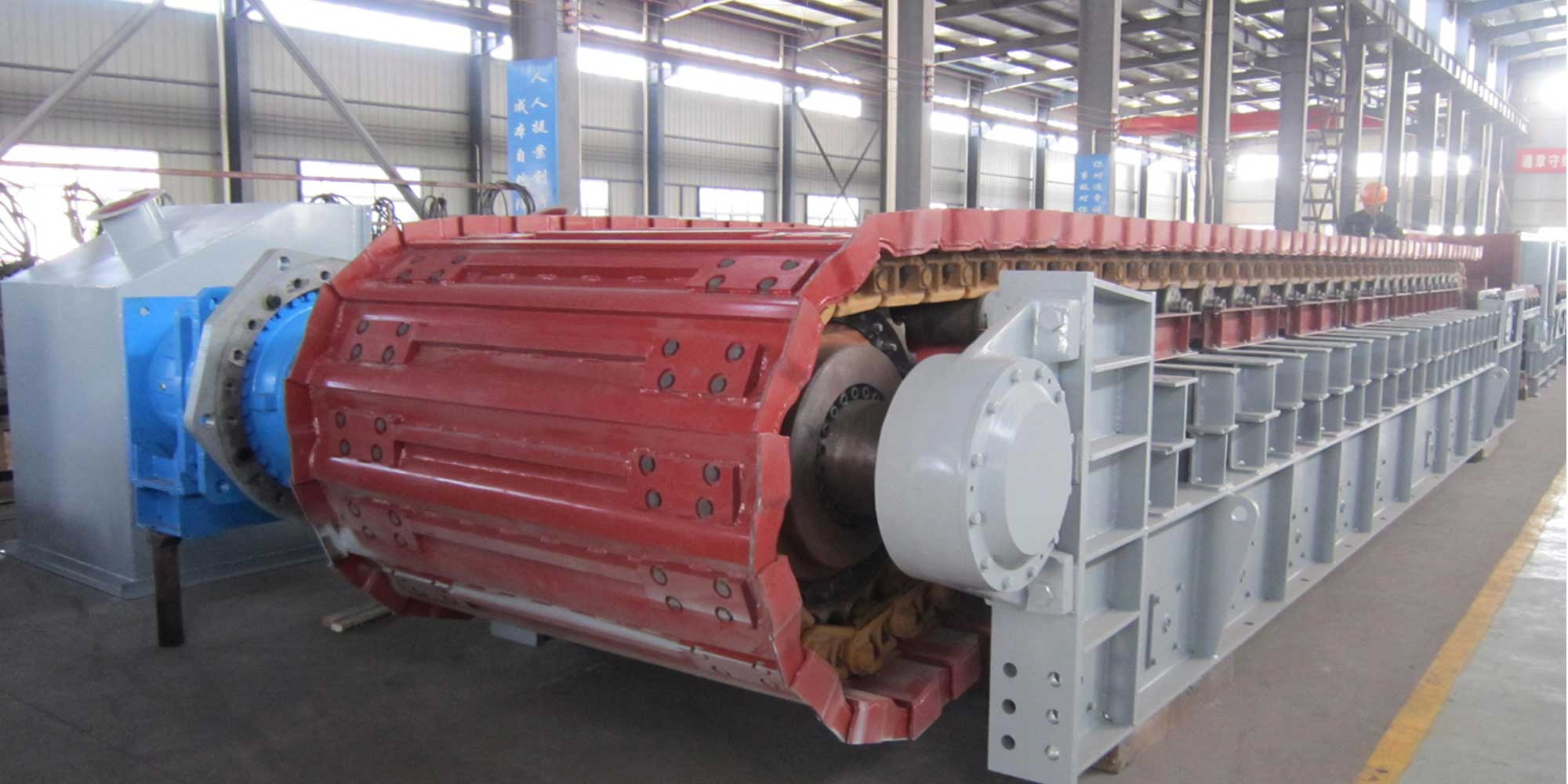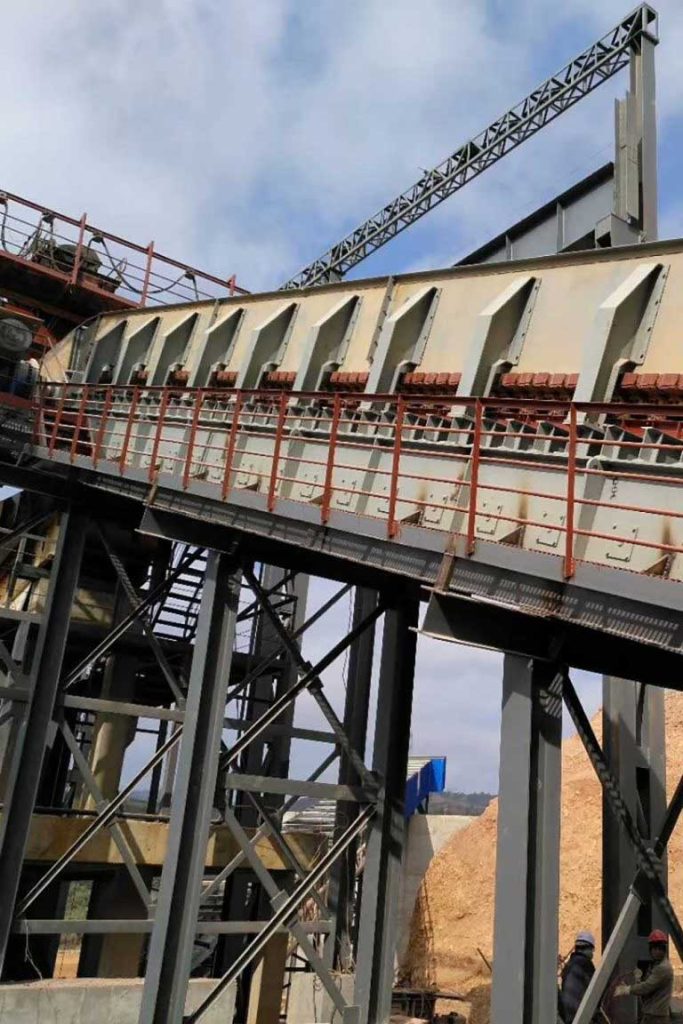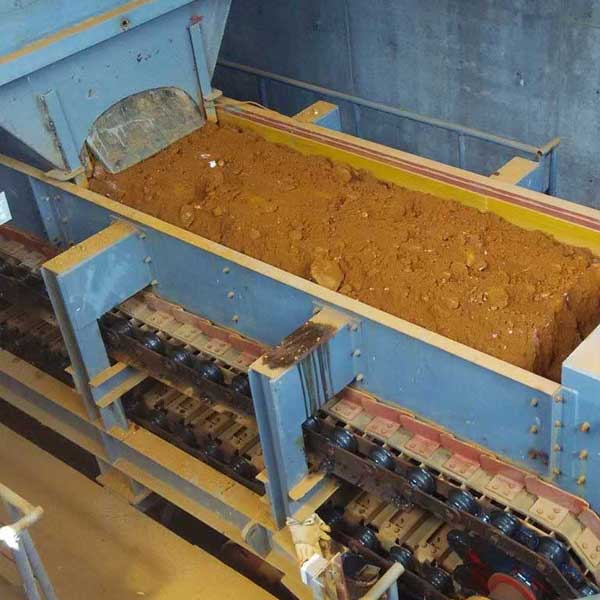The heavy-duty apron feeder used in the environmental protection ring cooler project of the sintering plant is used to transport hot sintered ore, and the feeding temperature is 750°C to 850°C. Under normal working conditions, the heavy-duty apron feeder usually works at normal temperature, and the drive shaft, the sprocket, and the supporting wheel are connected by Hub-Shaft connections. Hub-Shaft connections are easy to disassemble and replace, with good centering and convenient maintenance.
However, when the heavy-duty apron feeder is under high-temperature conditions, due to the thermal expansion and contraction of the material, the gap between the main shaft and the sprocket will be too large under high-temperature conditions, exceeding the maximum expansion of the Hub-Shaft connections, making the Hub-Shaft connections fail.
Operation analysis of heavy-duty apron feeder under high-temperature conditions
The temperature of the sinter transported by the heavy-duty apron feeder is 750°C-850°C. After being cooled by the blower in the transport section, the temperature of the material is 400°C-500°C when it reaches the discharge position of the main shaft, so the Hub-Shaft connections cannot be used.
When the heavy-duty apron feeder transports materials, the axial force on the main shaft sprocket can be ignored, and it mainly bears the radial force. In order to ensure a reliable connection when carrying a large radial load, the main shaft device of the heavy-duty apron feeder can be connected by a key between the driving main shaft, the sprocket, and the support wheel.
The key connection can be used in high-temperature conditions, reliable connection, convenient loading and unloading, and low processing cost.
By adopting the key connection, the heavy-duty apron feeder can effectively meet the high-temperature conditions of the operation site and ensure the performance of the main engine.
Principles and Theory
Restricted by the high-temperature conditions at the site where the heavy-duty apron feeder is used, the main shaft device of the heavy-duty apron feeder has been changed from the previous design type, and the Hub-Shaft connections between the drive main shaft and the driving sprocket and the support wheel have been changed into keyed connections, which can effectively overcome The high-temperature conditions on-site ensure the smooth operation of the equipment.
key connection
When the key connection type is adopted, in order to ensure a reliable connection and the axial fixation of the sprocket and support wheel, it is necessary to analyze the stress of each part. According to the analysis and calculation, during the process of conveying materials, the sprocket and supporting wheels are subjected to relatively small axial loads and mainly bear radial loads. For this reason, the supporting wheel part in the middle part of the main shaft device adopts the axial positioning method with one end as the shaft shoulder, and the other end as the retaining ring and the positioning screw; while the positioning method of the shaft shoulder and the bushing is adopted in the sprocket part.
hub-shaft connection
A hub-shaft connection is a keyless connection device that realizes load transmission by tightening high-strength bolts to make the pressure and friction generated between the containing surfaces. Affected by the thermal expansion and contraction characteristics of the material, its application range is limited. The ambient temperature is 200°C. The coupling can effectively overcome the environmental temperature factor, and the transmission is reliable. During the process of transporting materials, the heavy-duty apron feeder can effectively alleviate the impact of the unloading truck on the heavy-duty apron feeder when unloading due to the buffering effect of the buffer material layer on the chain plate and the buffer spring at the tensioned part.
Read More: Variable rate feeder Wikipedia
How to deal with the problem: How Heavy-Duty Apron Feeders Work at High Temperatures
Apron Feeder
An apron feeder is mainly used to continuously and evenly supply and transfer various large heavy objects and abrasive bulk materials from storage bins or transfer funnels to crushers, batching devices, or transportation equipment.
More Detail: Apron Feeders, Everything You Need to Know, Best Guide 2023


